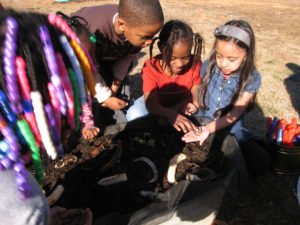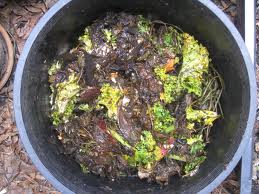
Examine worms with children. Worms are important to compost soil.
Worms have 5 hearts, a brain with two tiny lobes and a long spinal chord. It is divided into segments, has no bones but moves using muscles and very tiny hairs that are on each segment. They breath through their skin and it needs to stay moist for them stay alive. A worm has no arms, legs or eyes.
Though worms don’t have eyes, they can sense light, especially at their anterior (front end). They move away from light and become paralyzed if exposed to light for too long (approximately one hour). If a worm’s skin dries out, it will die.There are approximately 2,700 different kinds of earthworms.
Worms live where there is food, moisture, oxygen and a favorable temperature. In one acre of land, there can be more than a million earthworms. The largest earthworm ever found was in South Africa and measured 22 feet from its nose to the tip of its tail.
Worms tunnel deeply in the soil and bring subsoil closer to the surface mixing it with the topsoil. Slime, a secretion of earthworms, contains nitrogen. Nitrogen is an important nutrient for plants.
Worms are cold-blooded animals and have the ability to replace or replicate lost segments. This ability varies greatly depending on the species of worm you have, the amount of damage to the worm and where it is cut. It may be easy for a worm to replace a lost tail, but may be very difficult or impossible to replace a lost head if things are not just right.
Baby worms are not born. They hatch from cocoons smaller than a grain of rice. Worms are hermaphrodites. Each worm has both male and female organs.
Worm Bucket

